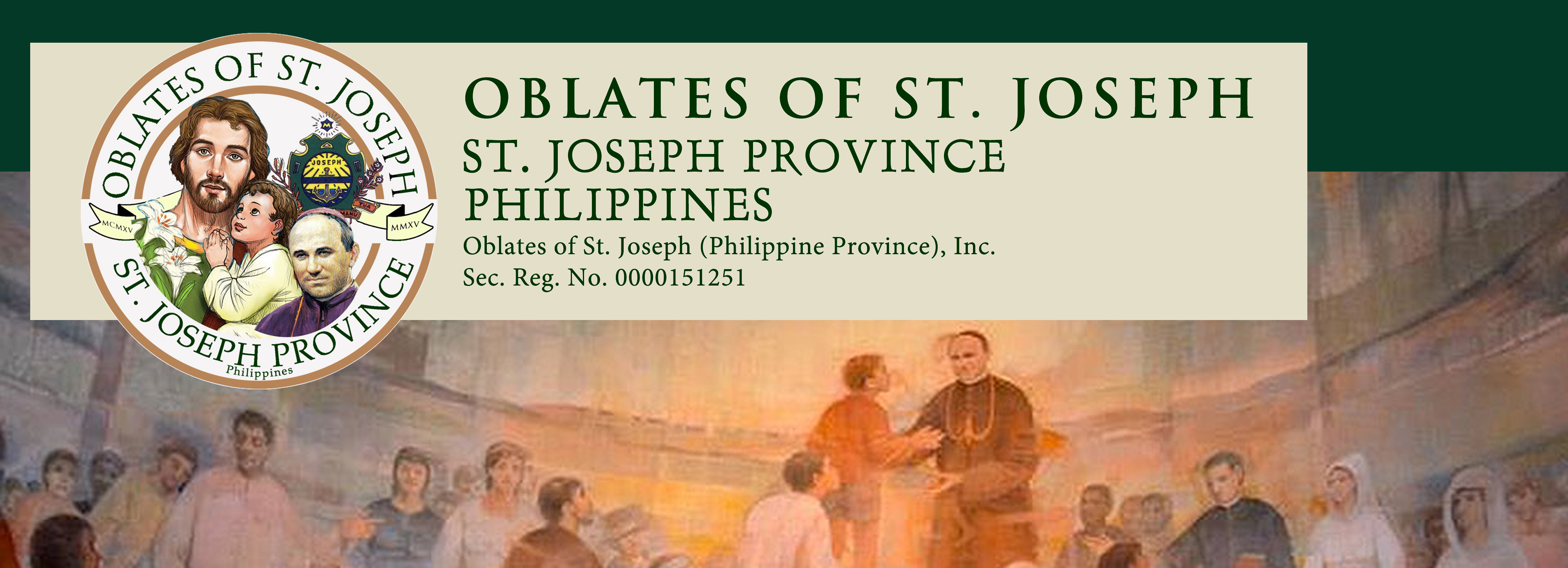THE STORY OF OUR PROVINCE

![]() The St. Joseph Province is the first mission of the Congregation of the Oblates of St. Joseph outside Italy which started in 1915 and was e stablished as a Province in 1987.
The St. Joseph Province is the first mission of the Congregation of the Oblates of St. Joseph outside Italy which started in 1915 and was e stablished as a Province in 1987.
Provisional Art. 1
Provincial Directory
St. Joseph Province
2020
The following are foreign OSJ priests and brothers who have offered and dedicated themselves
to serve the interests of Jesus in the Philippines. They are arranged according to their year of arrival in the country.
IN GRATEFUL REMEMBRANCE
Rev. Fr. Giuseppe Anfossi, OSJ
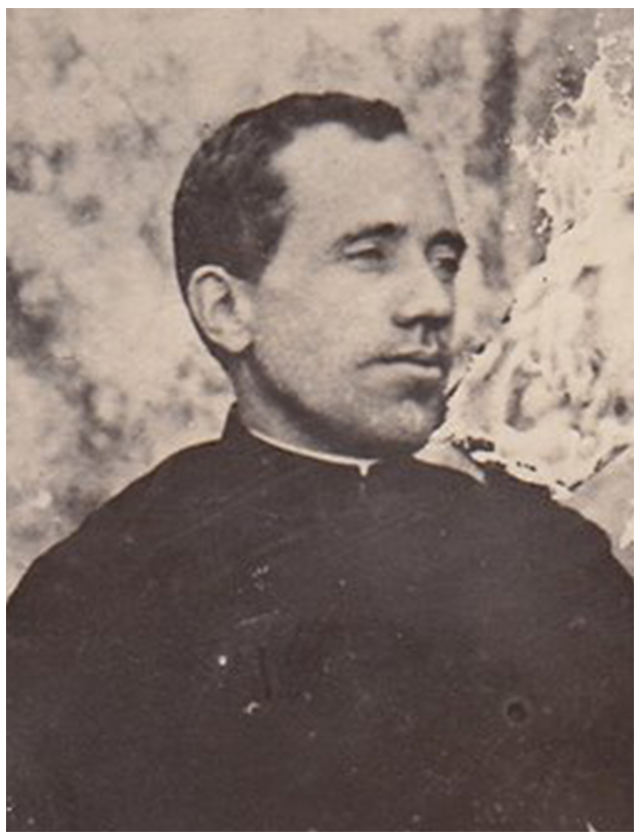 Father Giuseppe Anfossi had been a priest since 1909 and had experience ministering among seminarians in Asti and then in the oratories of Ceraldo and Oleggio. He had been assigned Superior shortly before leaving for the mission to the Philippines. As a result, Fr. Anfossi was witness to the first pains that had been inflicted upon them and that he had to carry the burden of overseeing the well-being of his brothers while going through a period of adjustment himself.
Father Giuseppe Anfossi had been a priest since 1909 and had experience ministering among seminarians in Asti and then in the oratories of Ceraldo and Oleggio. He had been assigned Superior shortly before leaving for the mission to the Philippines. As a result, Fr. Anfossi was witness to the first pains that had been inflicted upon them and that he had to carry the burden of overseeing the well-being of his brothers while going through a period of adjustment himself.
Upon arriving in Batangas, Fr. Anfossi was assigned to the main parish in San Jose with Brother Giuseppe Maccagno. The parishes of San Jose and Cuenca were composed of 21,000 souls. It was truly an overwhelming assignment given to only two bodies. Though only about two hours from San
Jose, the roads to Cuenca were infamous for thieves who attacked the
travelers from Lipa, who were known to strike the unwitting
victims with a sword or a cudgel, sending them to a violent
death before going on to loot their money, belongings and
other valuables.
Such were the hazards that Fr. Anfossi dealt with, not to
mention the fact that he was constantly on long trips on
horseback to fulfill his duties between these parishes.
The tropical weather was also slowly weakening him.
Nevertheless, Fr. Anfossi fulfilled his obligation as Superior
well, with most of his letters speaking only of his concern for
his brothers. His eloquent and emotional letters would often
be describing the situation of the parishes of Ibaan, Tombol,
Taysan, and Lobo, which had such needs for reconstruction
if they were going to properly fulfill the duties they were
meant to do. And so, as Fr. Anfossi would continuously
request for assistance from Asti, by his own actions he also
tried to raise funds hoping to raise 450-500 Pesos to be spent
for the dilapidated or nonexistent churches. By all accounts
he was known to be gentle-hearted and accommodating,
too much in fact that he would neglect his own health and
well-being in favor for others.
The long trips on horseback were slowly taking its toll on
him, and his weakening state worsened by the sorrows he
would experience in being apart from his beloved brothers
when the time came that spiritual support was necessary.
Added to that was the death of his closest companion,
Bro. Giuseppe Maccagno a few years prior to his, and the
silence from Asti in response to their repeated request for
assistance.
On the 16th of July 1921, Fr. Anfossi’s continuously
deteriorating health sent him to the hospital. During this
time, Bro. Camera had been on his way back, bringing with
him the reinforcements to the Philippine Mission. The
good news, while delighting Fr. Anfossi, did little to help his
condition. At 9:45 am of the 20th of August, at the tender
age of 38 years old, he had gone back to the Lord whom he
had served so well.
Br. Giuseppe Maccagno, OSJ
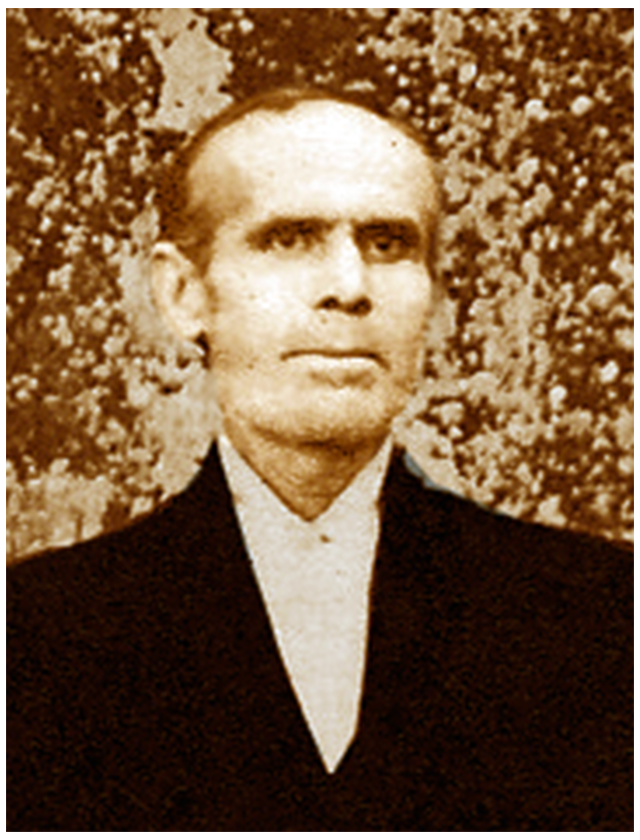 He was born on April 23, 1862 in Monale d‘Asti, Italy. In 1907, he made the Perpetual Profession and remained in the Novitiate house going to work at the Casabianca during the day. In 1908, he was sent to the agricultural colony of Figliano (Florence) and in 1911 to Certaldo (Florence). When this house was closed in 1913, along with Father Giussepe Anfossi and other confreres, he went to open the new house in Oleggio (Novara). When he was at Certaldo he had told Father Anfossi: “The two of us will cross the sea and we will go far away.” And, in fact, they were part of the first group of five missionaries who went to the Philippines in 1915.
He was born on April 23, 1862 in Monale d‘Asti, Italy. In 1907, he made the Perpetual Profession and remained in the Novitiate house going to work at the Casabianca during the day. In 1908, he was sent to the agricultural colony of Figliano (Florence) and in 1911 to Certaldo (Florence). When this house was closed in 1913, along with Father Giussepe Anfossi and other confreres, he went to open the new house in Oleggio (Novara). When he was at Certaldo he had told Father Anfossi: “The two of us will cross the sea and we will go far away.” And, in fact, they were part of the first group of five missionaries who went to the Philippines in 1915.
Aside from his age, Bro. Maccagno also had a gift for
prophecy. Having been with Fr. Anfossi since their stay
at Certaldo, he already had a vision shared to Fr. Anfossi,
being, “That the two of us will cross the sea and we will
go far away.” Indeed, that was exactly what had happened.
Amidst the chaos even in the very boat with their new
friends and guide, Bro. Maccagno had proven himself to be
the neutralizer and the quiet “glue” that held many things
in place.
Upon arriving in Batangas, Bro. Maccagno was assigned
along with Fr. Anfossi to San Jose, which includes also the
parish of Cuenca. Together they handled 21,000 souls.
While the favorable location of San Jose put it within the
area of first class roads and near Lipa, the roads to Cuenca
were known for thieves and vagrants that would victimize
passersby.
During this time, as Fr. Anfossi was constantly on
horseback travelling from one area to another, the elderly
Bro. Maccagno was in charge of sacristy, as well as being
given the responsibility for the kitchen and the treasurer of
the house. Bro. Maccagno was unwavering in fulfilling his
duties and was beyond reproach meriting praises from Fr.
Anfossi who would often write about his appreciation and
admiration for Bro. Joseph for being ready at any time of the
day and ready to help in every aspect even upon just hearing
the approaching sound of the horse. He was, according to all
accounts, doing an apostolate of good example.
Perhaps it was his quiet and timid nature that made him
more inclined to cultivate the garden in order to plant and
harvest some good vegetable that could add to their often
sparse diet as a result of their strict financial situation. The
good brother nurtured his little plot of land, trying to plant
tomatoes, and other fresh herbs. However the constant
onslaught of typhoons would often render his efforts futile.
Such drawbacks never bothered the enduring brother who
simply tried, and tried again.
Throughout all this, Bro. Maccagno was also a sterling
example of spiritual practice, never failing to get up in the
morning and by candlelight to read meditations, to do
devotions with contemplative conversations with Jesus. By
this time, in 1916, he was already 54 years old.
In October of 1918, Bro. Maccagno was aff licted with
dysentery, and true to his unassuming nature, he had tried
to keep his pain and difficulty hidden for two months.
Never wanted to let others make a fuss, he had initially and
vehemently opposed attempts to be sent to the doctor, so
much so that by the time that he had agreed to put himself
under medical examination, they found his illness difficult
to heal.
He was constantly in the state of weakness since then but he
was still steadfast in his desire to serve the mission. During
this time, the missionaries had convened to decide on
whether to send Brother Joseph to Italy, hoping that perhaps
being back in his native country would restore the color to
his cheeks seeing as how, in the words of Anfossi, the work
and weather of the Philippines had taken 20 years from
his life.
Rev. Fr. Ernesto Fornaca, OSJ
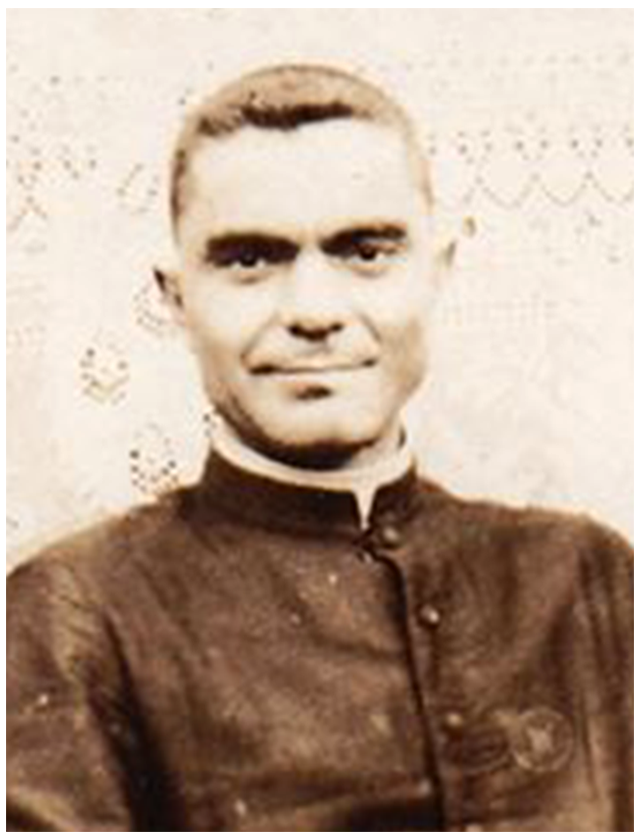 He was born on January 24, 1888 in Sessant d‘Asti, Italy. He entered the Congregation at the age of 12 and completed regularly his studies, being ordained priest in Asti in 1913. For a short period, he was teacher and prefect of the minor seminarians in Asti and in Mondovi.
He was born on January 24, 1888 in Sessant d‘Asti, Italy. He entered the Congregation at the age of 12 and completed regularly his studies, being ordained priest in Asti in 1913. For a short period, he was teacher and prefect of the minor seminarians in Asti and in Mondovi.
At 27 years old, the second
youngest in the group, he was only two years a priest when
he left the oratory and church of Mondovi to depart for the
Philippines.
The hardships of Fr. Ernesto were magnified as he was
assigned to Taysan and Lobo, the farthest from San Jose,
and composed of 14,000 souls. This posed an immense
challenge as from San Jose to Taysan, it was a four-hour
travel by horse; and from Taysan to Lobo, another fivehour journey through mountainous roads and streams.
Originally planned to be accompanied by Bro. Camera, Fr.
Ernesto was left alone when the former was transferred to
fulfill his duties as assistant to the Apostolic Delegate. By
such turn of events even the comfort of having a familiar
ally in such a strange and unfamiliar new world was also
taken from Fr. Ernesto.
Fr. Ernesto’s first harsh introduction to the life he had chosen
was the poor and shabby condition of the church where he
was assigned. Though Fr. Ernesto was already accustomed
to live without possessing many things, in Taysan he had
spent from the moment of his arrival and until the next few
months, sleeping on the dirty f loor on a simple mat with no
bed. In the beginning he also had no chairs, had eaten on
borrowed plates and bathed using only a glass. After a few
months his situation improved as he received a donation of
three new chairs and had gotten a hold of his own plates and
a sink.
The fatigue from the travel was particularly gruelling.
He would often travel all night on horseback through harsh
roads, devoid of any light except from the stars in the sky.
On Sunday morning he would celebrate mass and preside
a meeting in Taysan and by Monday morning, travel for
more hours on horseback to go to the parish in Lobo where
he would remain a few days before returning to Taysan.
Though he had two parishes under his charge, Fr. Ernesto
had only one church since the other was destroyed by a
typhoon in November 1916.
Despite of these, Fr. Ernesto continued with his duties
dividing his time between the two parishes assigned to him.
He became known
to the people of the community.
Of the first
five missionaries he served the Philippines for forty-two years.
Rev. Fr. Eugenio Gherlone, OSJ
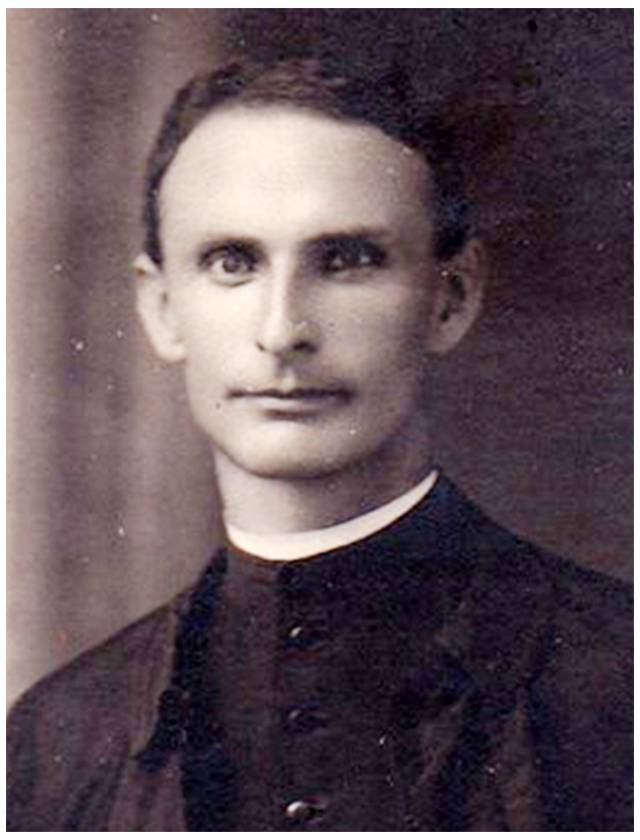 How many times on feast days arriving from Tombol at
12:00 or at 13:00, after hours of travelling, I find in the
kitchen two or three hard-boiled eggs, and a dish of
uncooked rice?
How many times on feast days arriving from Tombol at
12:00 or at 13:00, after hours of travelling, I find in the
kitchen two or three hard-boiled eggs, and a dish of
uncooked rice?
Such were the words of Fr. Eugenio Gherlone, one of the
first five missionaries who had arrived to undertake the
long and exhaustive journey to fulfill their vision for the
Philippine Province.
He was born on January 28, 1890 in Cossombrato, Asti, Italy. He was ordained a priest in 1914, and the year after he left for the Philippines along with the first group of Oblate missionaries.
Narrating the usual and sad scene that would often greet
him after tiring days of work, Fr. Eugenio Gherlone would
often be overcome by a strong headache. And because of
exhaustion due to lack of proper food and his involuntary
prolonged fasting, he got himself weaker and even found
eating difficult.
However, as his brothers were, Fr. Eugenio Gherlone was a
soldier and instrument of the Lord, and bearing this in mind
he continued on with the missions. His last decades in the
Philippines bore witness to cementing the place now called
home
of the Oblates of St. Joseph especially in Batangas.
The youthful
fire was evident in Fr. Eugenio’s life and ministry. He was
admired for being methodic and precise though not quite
made for diplomacy as his later dealings would often show.
His eager and forthcoming spirit sometimes got the better of
him, such as his refusal of Msgr. Petrellii’s proposal for him
to leave the two parishes and stay in the Apostolic Delegate
as secretary. Despite Msgr. Petrelli’s insistence, Fr. Gherlone
did not keep silent about his dissent, citing his inability to
carry out such office. But Fr. Eugenio would prove himself
to be a good person instrumental in laying the groundwork
for a more organized mission in the country.
Upon arriving, Fr. Eugenio was in-charge of the vast
parishes of Ibaan and of Tombol (now Rosario) which had
a population of 18,000. About an hour and a half from San
Jose, both towns were on the way to Taysan, through a road
that was not crossed by streams, though good on daylight
but difficult in rainy season. The means of transportation
was by horseback.
In Tombol alone, Fr. Eugenio had more than 12,000 souls
under his charge and it was only him who had to do the work
of saving the people from the inf luences of the Aglipayans.
In fact, the presence of the Aglipayans added to the difficulty
of bringing back the people to the Christian Faith. There
was a strong anti-colonialism mindset at the time as the
atrocities during the Spanish era were still fresh in the minds
of the people. Moreover, there was great distrust against the
foreigners. And all these came to the cares of Fr. Eugenio,
who was also trying to acquaint himself with the language
and the people. With great suspicions against westerners
even the Catholics were ashamed to attend mass or greet
the priest. He however persisted, celebrating services for
free; and though slowly Fr. Eugenio paved the way for a seed
of admiration to be planted in the hearts of the people.
The people of Ibaan, on the other hand, was considered by
Fr. Eugenio as fervent and beautiful group of people.
And
because of the people’s strong religious fervor he found
his work-situation lighter. Nevertheless, as people began
appreciating his works, he said that he was in perfect peace,
harmony and concord with both places.
Fr. Eugenio stayed in Tombol from Monday to Wednesday
while doing also services in the Church of Ibaan. Despite
of these hardships alongside with familiarizing himself with
the people and the country, the lack support for decades
from his brothers in Italy, he continued with his work
holding true to his calling.
Upon Fr. Anfossi’s death, it was Fr. Eugenio who had
assumed the role of Superior which he served for two three-year terms. During this time he took great part in the many
milestones the Oblates had achieved and initiated the first
formal negotiations with the Bishops of Lipa regarding
financial support for the missionaries.
After passing his torch as superior to Fr. Fornaca, he left the
Philippines to return to Italy to do the honor of opening the
missions to the USA, Peru and Bolivia, spreading his fiery
and raw passion for service to even more continents all over
the world.
Br. Giovanni Battista Camera, OSJ
 Brother Giovanni Battista Camera was a last minute
addition to the first missionaries to the Philippines. In fact throughout the
difficult process of obtaining his passport, there were many
instances that could have led to his exclusion . Nevertheless
the colorful and often complicated brother proved to be
a loving servant and integral character in the history of the
Oblates of Saint Joseph in the Philippines.
Brother Giovanni Battista Camera was a last minute
addition to the first missionaries to the Philippines. In fact throughout the
difficult process of obtaining his passport, there were many
instances that could have led to his exclusion . Nevertheless
the colorful and often complicated brother proved to be
a loving servant and integral character in the history of the
Oblates of Saint Joseph in the Philippines.
Prior to leaving for the Philippine mission, Bro. Camera
was just re-admitted to the Congregation on September 3,
1914. However, with pontifical approval he was sent to the
Philippines as a temporarily professed. It was not until July
2, 1917 that he was admitted to perpetual vows.
When they were all given assignments, Bro. Camera was
originally sent to Taysan to accompany Fr. Fornaca, at the
parish.
However, Bro. Camera’s trial by fire was not meant to be
in Taysan. As in December of that year, he was called to
Manila to render service to the Apostolic Delegation,
leaving Fr. Fornaca alone in Taysan. His time working in
the Apostolic Delegation was no easy feat, as difficulties
slowly arose that would bring him to the very edge of his
patience and virtue. The brother would often write to Fr.
Cortona in Asti about the immense pleasure that he gets
from the letters, considering them as a haven in the midst of
the isolation and unfamiliarity of his new surroundings.
Despite his own personal sufferings however, Bro. Camera
would deal of his pains thinking of their brothers being
called to arms, in the face of the violence of war and the
atrocities that man causes towards their fellowman. Bro.
Camera’s heart wept, and in their sufferings, he found the
strength to be grateful to pursue his service.
Bro. Camera’s emotional letters would often describe such
snippets of faith. Despite holding fast to his obligations, there
were times when he would buckle under the pressure, as he
would often talk about waking up at 4 am in the morning,
and most especially the impatience and irritation of the
monsignor in his inability to properly learn and understand
the language as fast as they needed him to. Despite such
wounds however, Bro. Camera would often contemplate on
the difficulties of his brothers, thinking of even Fr. Ernesto
and Fr. Eugenio eating bread only once a week, and how
the others would be in horseback every day. The sight of his
brothers would often warm the soul of Bro. Camera.
Fr. Anfossi, upon knowing that Bro. Camera was terribly
overworked, had written to Msgr. Petrelli to release his
brother from his duties in the Apostolic Delegate. Such
did not go well as Msgr. Petrelli would write to Fr. Cortona
to patiently explain that Bro. Camera was in fact already a
model example of patience as none had lasted for as long as
he has.
For a time, Bro. Camera had wanted to study priesthood. His
often eccentric character had initially worried Fr. Anfossi,
given his often overzealous and eager nature of making an
effort in areas that should be of no concern to him. However
such an attitude also presented with it positive qualities as it
was Bro. Camera who had personally taken the trip to Italy
to speak in front of the Superior and his Council to plead
for assistance. His emotion and heartfelt admonitions had
perhaps done the work to move the Council to finally send
assistance and it was through his efforts that new blood was
sent to do mission in the Philippines he had loved so dearly.
For personal reasons and with the permision of the Superior Council, he left the Congregation in 1922.
Rev. Fr. Vincenzo Prandi, OSJ
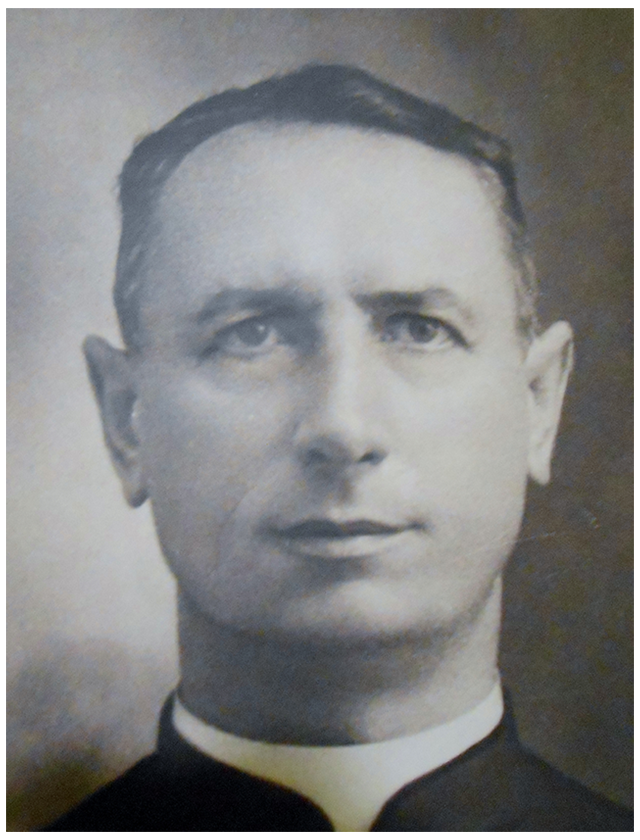 A few months after his priestly ordination, he was called to serve as a chaplain in the Italian Light Infantry Corps and was sent, during the whole period of 1915-1918, to the front, in the midst of a raging war. When he returned to the Mother House, he was prefect of the theologians. In 1921, he left as a missionary for the Philippines.
A few months after his priestly ordination, he was called to serve as a chaplain in the Italian Light Infantry Corps and was sent, during the whole period of 1915-1918, to the front, in the midst of a raging war. When he returned to the Mother House, he was prefect of the theologians. In 1921, he left as a missionary for the Philippines.
He was the pastor of Taysan and then Cuenca, where he built a church in brickwork replacing a shed-like structure made of wood and bamboo which he also had founded.
In 1932, he became the Superior of the mission and was transferred to San Jose as parish priest. In 1938 he took part in the Fourth General Chapter in Asti.
Few years after he returned to the Philippines, he, together with the other Italian OSJ missionaries, found himself in the war between the Americans and the Japanese. During the Japanese occupation, he experienced several painful hours and threatened repeatedly of having aided and defended his parishioners accused as rebels. He tried to intervene when some of his parishioners were held captive but to no avail. They even bound him and threw him in a hut with the other prisoners. The next day they were carried in a truck to an unknown destination. They had been brought to the bank of a stream where they were gunned down. The others had died instantly, but Fr. Prandi, seriously wounded and fallen into the bed of the dry steam, rose to sit down, making the sign of the cross towards their assassins. So a soldier pierced him through several times with his bayonet. But since he still showed signs of life, that same soldier finished him off by breaking his head with the butt of his rifle. This was on January 27, 1945. His remains were found the almost five months after, on June 6, identified because of some golden teeth and was properly buried in the cemetery of San Jose. He lived 36 years of his life as a religious and 30 years as a priest.
Rev. Fr. Giovanni Boccignone, OSJ
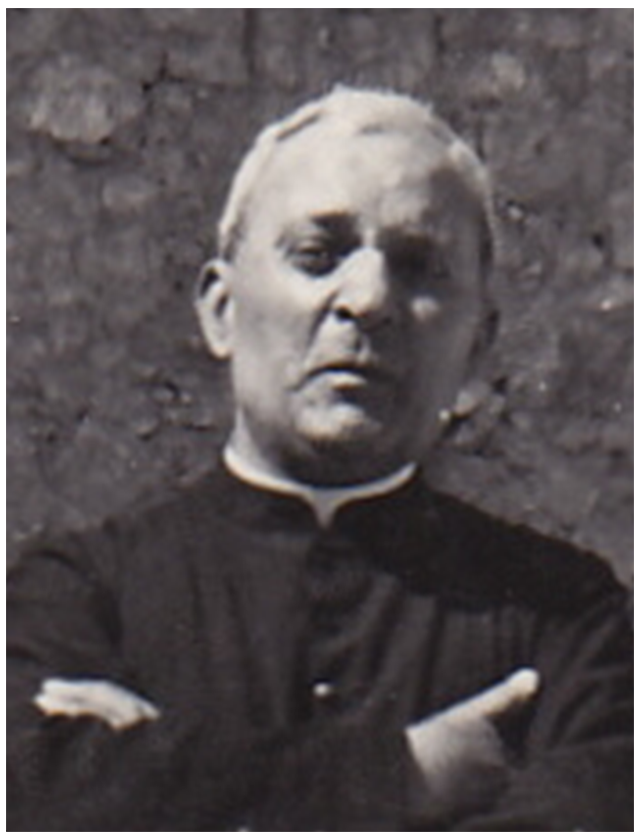 He was born on January 26, 1893 in Montemagno, Alessandria, Italy.
He was born on January 26, 1893 in Montemagno, Alessandria, Italy.
A year after his Perpetual Profession, still a cleric, in 1921 he left for the Philippines. Like other Italian missionaries, he also studied and learned the native language and the local habits and customs. In 1922, he was ordained priest in Lipa, Batangas.
He was first assigned as parish priest of Cuenca. A year after he was assigned in Taysan where he stayed for around thirteen years.
In 1936, he was forced to return to Italy due to his failing health. Late in his life, he became blind and had to abandon all his ministry and activities. He died on June 22, 1959 at the Mother House, Asti.
Rev. Fr. Luigi Mortera, OSJ
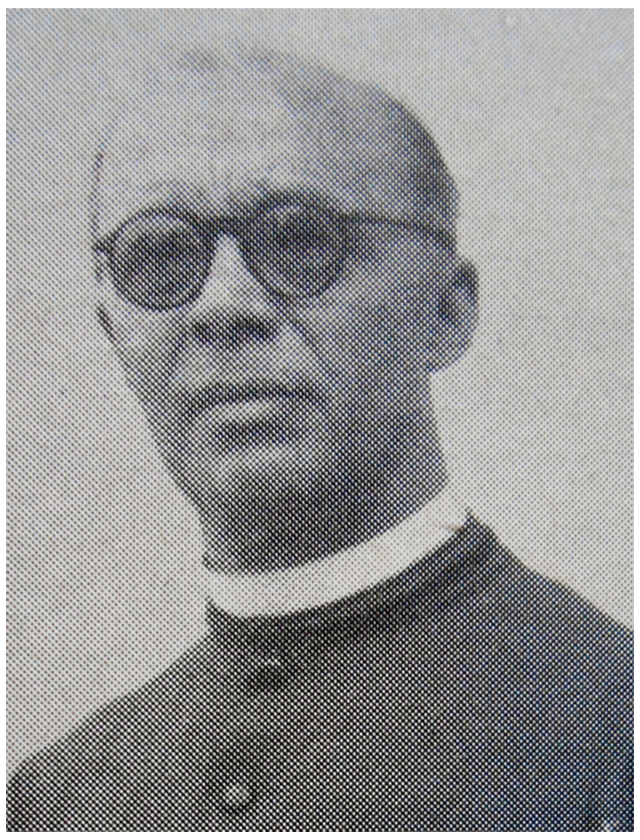 He was born in Camiglie d‘Asti, Italy on March 31, 1898.
He was born in Camiglie d‘Asti, Italy on March 31, 1898.
At the age of nine, he entered the Congregation. He was not even a priest when he joined the second group of missionaries for the Philippines. They left Italy in 1921. He was ordained in Ibaan, Batangas in 1923.
From 1923 to 1938, he worked in the parish of San Jose, Batangas, first as assistant and then as parish priest.
In 1938, he took part in the Fourth General Chapter in Asti. When he returned to the Philippines, he went to Rosario where his brother, Fr. Egidio was staying and later he became its pastor.
During the Second World War, he suffered so much with the atrocities he witnessed from the Japanese invaders. He also saw how they destroyed the convent and the parish church.
He rebuilt his residence as soon as possible and in 1946, he inaugurated also the church, an improvised building just so he could start the life of the parish.
In 1963, with his health very much compromised, he came to Italy to be able to rest for a while. But his plan to return to the country never happened when he suffered a fatal heart attack on October 11, 1963. At his funeral in Asti, Msgr. Olalia, Bishop of Lipa, was present. He lived 46 years as a religious and 40 years as a priest.
Rev. Fr. Egidio Mortera, OSJ
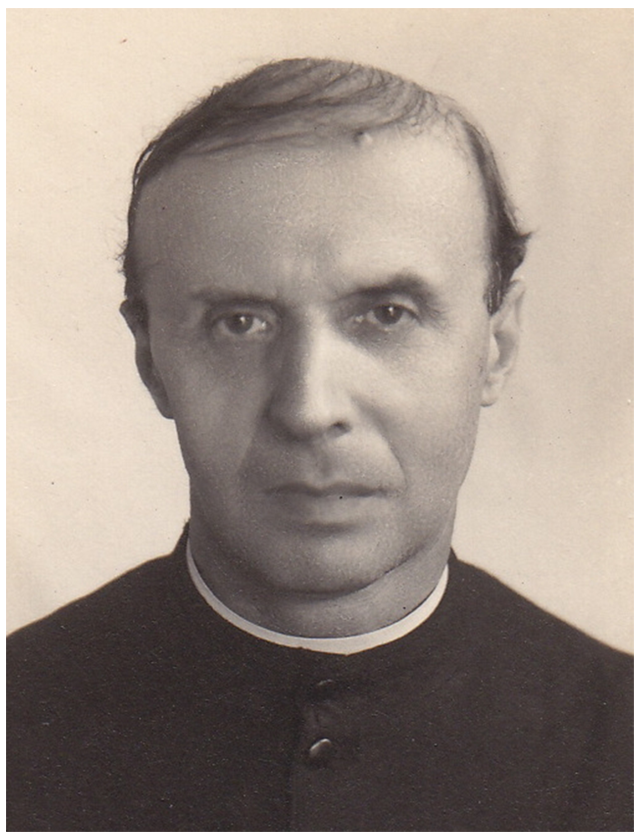 He was born in Cariglie d‘Asti on April 21, 1889.
He was born in Cariglie d‘Asti on April 21, 1889.
He entered the Congregation at age 17 and was ordained Priest in 1921.
For five years, he worked in Fulgor in Asti. In 1927, he left for the Philippines and worked in the Parish of Rosario in Batangas, together with his brother Fr. Luigi. The vast Parish of Rosario had been divided between many sects and even the parish church had fallen in the hands of the Aglipayans (a nationalistic church named after its founder, Gregorio Aglipay who was a former Catholic priest). For the few remaining Catholics, there was only a wooden chapel, which will later be replaced by the actual church, initiated by Fr. Edoardo Meda, OSJ.
He went for vacation in Italy in 1939. However, due to the outbreak of war, he remained in Asti until 1946 working in the Michelerio Institute and in the Mother House.
Then he returned to Rosario and was reunited with his brother, who suffered much during the war. After a short time, he started the new Parish of Alupay, by separating it from Rosario. He stayed for 24 years.
After which he returned to Rosario and helped Fr. Edoardo and Fr. Elia May.
He truly served tirelessly until his death. He suffered a heart attack and was hospitalized in St. Sebastian Hospital in Lipa. There he passed away at the age of 87, 70 years of them as a religious and 55 years as a priest.
Rev. Fr. Antonio Fanchini, OSJ
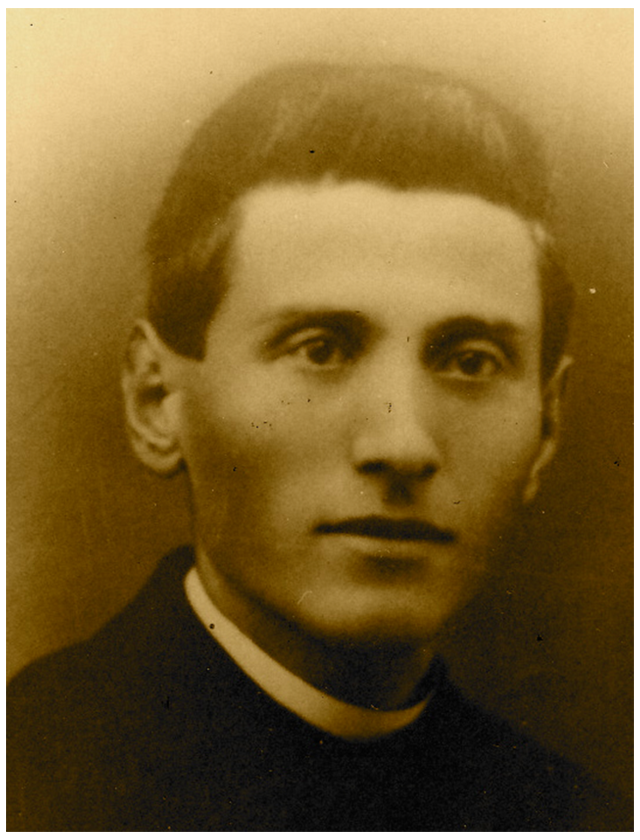 He was born in Castelleto, Novara on March 12, 1901.
He was born in Castelleto, Novara on March 12, 1901.
A few months after his ordination, he left as a missionary for the Philippines in 1929. He helped the confreres in San Jose and Cuenca. In 1929, he became the parish priest of Lumang-Bayan (now, Padre Garcia), Batangas. He learned the native language quite well.
During the outbreak of the war between the Americans and the Japanese, he was imprisoned as an enemy, like the other Italian priests. He was, however, freed when the Japanese arrived. But when the Japanese had to retreat, they massacred many civilians and burned many villages. The population evacuated to the nearby mountains, but he remained in his place, leaving the message: “Whoever may need the priest, knows where to find him.” On the evening of February 13, 1945, the Japanese arrived in the town and started to kill many people and set the place on fire. Together with some people, Fr. Fanchini left the convent and took refuge beyond the river.
Around midnight, he returned with an old man who was his sacristan. Everything was silent in the village that was still smoldering. On the insistence of the old man, Fr. Fanchini retired to take a rest. Around five in the morning the Japanese returned. He leaped to his feet and told the old man: “Go ahead and I will follow you.” The old man ran towards the river and was saved. For unknown reason to many, he did not follow the old man. Late in the afternoon, when the people returned they found him dead. He was lying under the shade of a coconut tree at the edge of the rice field close to the church, his face towards heaven and his arms opened wide. His chest was ripped open by bayonet strokes, his skull was broken with the butt of rifles.
He lived 26 years of his life as a religious and 19 years as a priest.
Rev. Fr. Emilio Boccalatte, OSJ
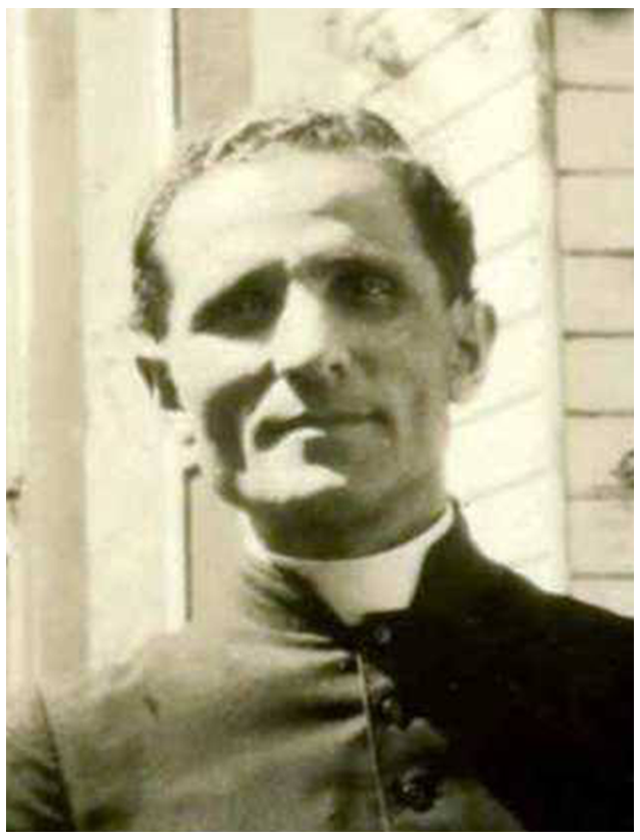 Together with Fr. Egidio and Fr. Antonio, he was sent to the Philippines to help the confreres.
Together with Fr. Egidio and Fr. Antonio, he was sent to the Philippines to help the confreres.
However, in 1929, he was pulled out of the mission and was reassigned to the newly opened mission in Pennsylvania with Fr. Gherlone. In 1931, he was transferred to Dos Palos in California with Fr. John Bofia.
The following year, he initiated the opening of the California Mission in Madera where he stayed until 1937. Sadly though he left the Congregation and the priesthood. He later received a rescript of laicization from the Holy See.
Rev. Fr. Giuseppe Visintainer, OSJ
 He was born on June 21, 1899 in Marter, Trent, Italy.
He was born on June 21, 1899 in Marter, Trent, Italy.
He entered the quite late at the age 25. But it took him only six years to finish his formative years to be ordained priest.
In 1932, he left for the missions in the Philippines, where he worked intensely and was esteemed and well-loved by all. He had an inclination and experience for mechanics and was appreciated and in demand in finding water veins and digging wells at his indications.
During the Japanese occupation, he went through very serious dangers. While the soldiers were leading him to his execution, he freed himself from them thanks to a big bump on the road and was able to hide in the forest nearby.
After the war, during a period of drought, his parish in Cuenca was in danger of being without water. To help the population, he asked that the well of the parish be excavated more deeply. In the course of digging, the worker who was excavating at the bottom, suddenly asked to be pulled up. He refused to continue with the job because it was suffocating below. So, Fr. Visintainer wanted to go down by himself. While they were lowering him down with a winch, they noticed that the rope was slackening. After a short while, they heard a thud for the priest was suffocated and fell to almost forty meters deep. The news spread like lightning and the confreres ran to find out what had happened. That evening the whole town was around the well. A big electric light was lowered down and Fr. Visintainer was found at the bottom with a spade and a pick-ax beside him. The workers who went down first might have hit one of the canisters of poisonous gas which were thrown by the Japanese at the well. This was on February 16, 1956. He lived 30 years of his life as religious and 25 years as a priest.
Rev. Fr. Lorenzo Bo, OSJ
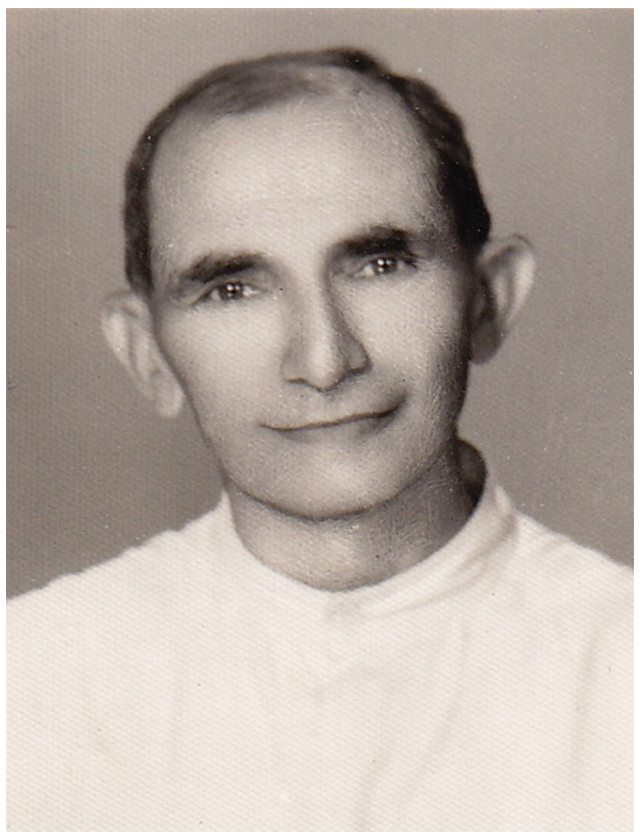 He was born on September 2, 1912 in Rocchetta Tanaro, Asti, Italy.
He was born on September 2, 1912 in Rocchetta Tanaro, Asti, Italy.
He made his first religious profession on September 30, 1929 and was ordained priest in Asti on June 29, 1936.
On November 1, 1937, he left for the Philippines. He first became the parochial vicar of Ibaan. He was then assigned as Pastor of Taysan. In 1947, he was in charge of starting the Seminary in San Jose, Batangas. From 1951 to 1958, he was the Superior of the mission. From 1959, he was the pastor of Padre Garcia and collaborator in the seminary. He also suffered greatly because of the Second World War, especially the atrocious death of Fr. Vincenzo Prandi, OSJ and Fr. Antonio Fanchini in 1945.
After almost 28 years in the country, Fr. Bo was transferred to Peru in 1965. In 1967, he was named Master of Novices of the primary group of Peruvian novices at the House of Chosica. Then he started the new Parish of Pornabamba where he remained for seven years, building the Church and its rectory. In 1975, he was named as pastor of Our Lady of Good Counsel in Lima. In 1980 he returned to Pornabamba. Three years after, in 1983, he lent his pastoral services in three parishes of Lima: Buen Consejo, Divino Maestro and Holy Family. His failing health forced him to retire in the Theological Seminary of Apolo in Lima. He peacefully breathed his last on September 17, 2009, a few days before celebrating his 80th anniversary of religious profession.
Rev. Fr. Guido Coletti, OSJ
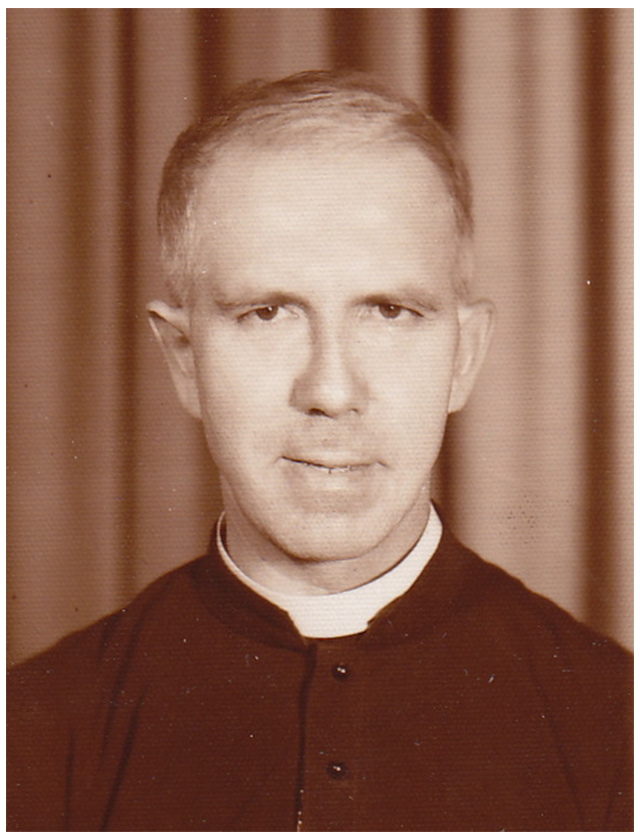 He was born in Torra, Trent, Italy on April 30, 1912.
He was born in Torra, Trent, Italy on April 30, 1912.
He entered the Congregation in October, 1925. He made his first profession of the religious vows on September 30, 1931. Then in 1935, he professed the vows perpetually. He was ordained priest on August 1, 1937.
On January 25, 1939, he left Italy for the Philippines. After a brief period in Cuenca, he was assigned as assistant Pastor of Ibaan. A year after he became its pastor. In 1946, he was elected Superior of the missions. In 1949, he was reconfirmed in that office. In 1965, he began the construction of a parish church in Greenhills, Mandaluyong (then part of the province of Rizal). This was the first church outside Batangas. This was formally inaugurated and dedicated in 1967. He became the Economo of the Philippine Delegation from 1972 to 1989. During this period also, he was elected twice as Councilor. He was also credited of building other parish churches, schools, seminaries and convents in the country. He died on November 21, 1996, having lived 65 years as a religious and almost 60 years as a priest.
Rev. Fr. Urro Gotri, OSJ
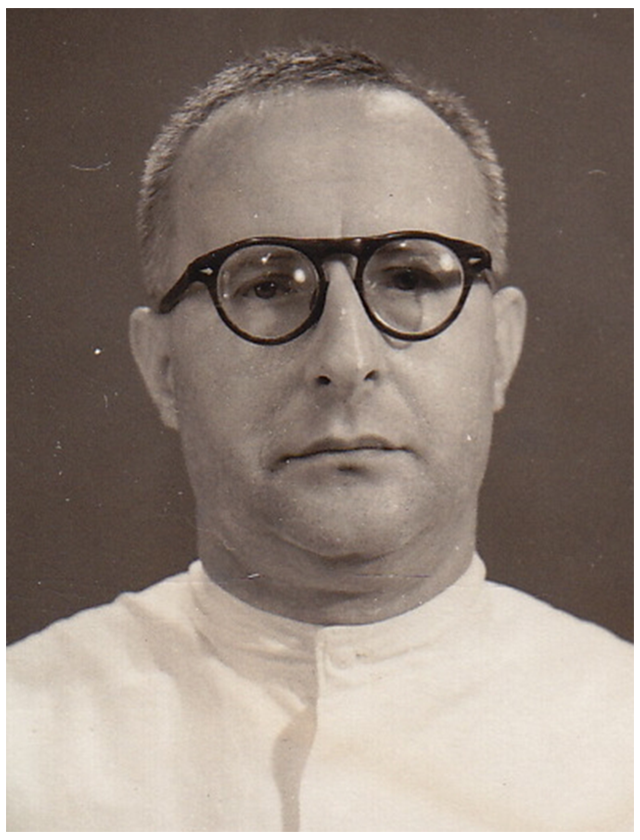 He was born in Borghetto di Noceto, Parma, Italy on January 28, 1917.
He was born in Borghetto di Noceto, Parma, Italy on January 28, 1917.
He entered the Congregation at age 12. He made his first profession in 1935. Six years after, in 1941, he professed the vows perpetually. Then on May 2, 1943, he was ordained priest. After his ordination, he stayed in Santa Chiara, assisting in Santuario di San Giuseppe, Asti until September, 1945. Then he was assigned to the House of Pontremoli.
In 1947, together with three other confreres, he left for the Philippines. His first assignment was pastor of Taysan until 1960. Then he was transferred to San Jose in 1960. From 1965 to 1976, he was pastor of Alupay. Then he was assigned as assistant parish priest of Padre Garcia. In 1980, he was appointed as its pastor. In 1985, he was also elected Councilor of the Delegation. On October 23, 1991, he died in Manila, living 56 years of religious life and 48 years as a priest.
Rev. Fr. Edoardo Meda, OSJ
 He was born in Corbetta, Milan on July 6, 1918.
He was born in Corbetta, Milan on July 6, 1918.
After his college in Armeno, he was assigned as assistant of the Postulants in Canelli and then of the orphans in Michelerio in Asti. Already then he revealed his great enthusiasm.
During his Theological studies in the Mother House, he founded the “Circolo Missionario” among the clerics and the “Sezione Sofferenti” as an aid to the Missionaries. These are two initiatives and nurtured very much the missionary spirit among his companions and in the Congregation.
After his ordination in 1943, he was sent to the Oratory of Trecate, where he worked among the youth and was also an active Chaplain of the “Partigiani” who were working in that area.
In 1947, he left for the Philippines, thus realizing his missionary ideal. He arrived there after a long journey by ship. He immersed himself immediately in multiple jobs: organizing the youth through catechism in the numerous villages of the Parish of Lumang Bayan (now Padre Garcia), Batangas. Later he was made Parish Priest of Rosario, where he started the construction of a new church, since the Parish church had been taken over by the Aglipayan sect. Because of this, he wanted it big and beautiful, in order to attract Christians to the Catholic faith. But he was not able to finish it, because he was overtaken by serious ailments that were later discovered to be originating from a tumor.
With a heavy heart, he returned to Italy. He was taken good care by his sisters who were also religious nuns in the hospital of Novara. He died in his native town, living for 33 years as a religious and 25 years as a priest.
Rev. Fr. Vito Sorrenti, OSJ
 He was born at Polla, Catanzaro, Italy on December 1, 1921.
He was born at Polla, Catanzaro, Italy on December 1, 1921.
He first professed the vows in 1928.
Still not ordained priest, he left for the Philippines in 1947. In 1948, he received the sacerdotal order. He was first assigned in the seminary and then in the Parish of San Jose. Then he was assigned as Parish Priest of Taysan and as in-charge of the school.
After twenty years in the country, he returned to Italy and stayed for some years in the Parish of St. Joseph Cafasso in Rome. The he was Parish Priest for nine years in Solofra and assistant pastor in Sesto Florentino. He spent his last years in Nuoro as confessor at the Shrine of Our Lady of Grace. He died on January 9, 1983, living 45 years as a religious and 38 years as a priest.
Rev. Fr. Pasquale Pontelandolfo, OSJ
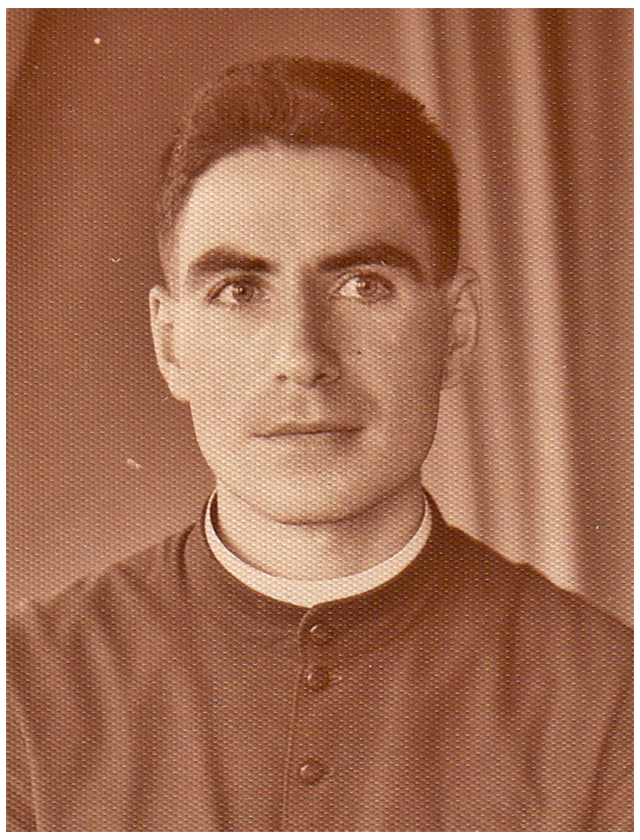 He was born in Riccia, Italy on January 3, 1921.
He was born in Riccia, Italy on January 3, 1921.
He entered the seminary of Santa Chiara in Asti in 1934. He made his first religious vows on October 5, 1938. He was ordained as priest on June 23, 1946 in Asti.
On May 6, 1947, he left for the Philippines to reinforce the missionaries who had been decimated by the Second World War. He had his pastoral work from 1947 to 1962 as parochial vicar in Cuenca and in Taysan. Then he was appointed as Pastor in Ibaan, Cuenca and Alupay.
In 1963 he returned to Italy and worked with the Italian emigrants in Belgium. At the end of 1965, he was sent to Peru. He remained there up to his death on September 23, 2011. He died due to a massive heart attack. He lived 73 years a religious and 65 years as priest.
Rev. Fr. Federico Lano, OSJ
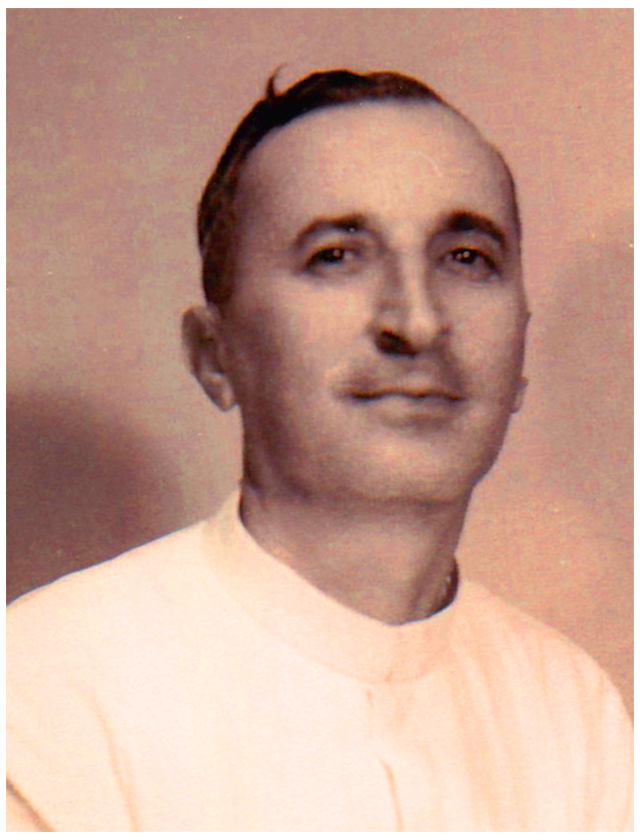 He was born in San Damiano d'Asti on December 3, 1920.
He was born in San Damiano d'Asti on December 3, 1920.
He entered the Congregation on March 21, 1939. He made his first religious profession on September 30, 1940. He was ordained in Asti on June 1948 in Asti, Italy. Two months later, he went to the Philippines where he worked with the young aspirants in San Jose. From 1952, he became Prefect of the “Carissimi” or young aspirants. He was appointed Delegate in March 1959, and at the end of his term in 1962 he returned to the seminary in San Jose as its rector. In June 1966 he returned to Italy where he stayed for five years. Then in July 1971 he went back to the Philippines and was named its Delegate. After finishing his term in 1974, he was appointed as Prefect of the Minor Seminar in San Jose. In 1976, he reentered definitively into Italy.
In Italy, he continued his pastoral services until 1999. Then he retired in the Rest Home in Castelnovo Calcea. Ten years after, on November 13, he met his death serene and prepared, living 69 years of religious life and 61 years of priesthood.
Rev. Fr. Elia May, OSJ
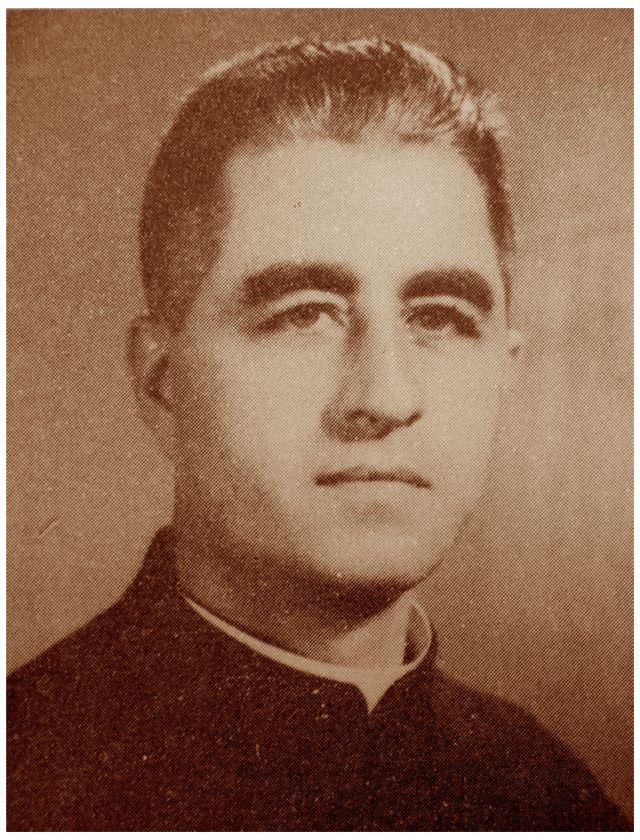 He was born in Schilparo, Bergamo, Italy on February 8, 1920.
He was born in Schilparo, Bergamo, Italy on February 8, 1920.
He was commonly called in the Philippines as “Monsignor” for having served as episcopal vicar and vicar forane for many years. He was among the last batch of Italian OSJ missionaries who came to the country.
He entered the Congregation on October 17, 1936. He made his first religious profession of vows on September 30, 1940 in Alba, Italy. He professed the vows perpetually on April 2, 1947 in Asti. He was ordained priest on June 6, 1948 at Santuario de San Giuseppe in Asti.
That same year he left Italy as a missionary to the Philippines. He served as assistant parish priest in Taysan, Batangas in 1950. He became the parish priest in San Luis, Batangas in 1954.
After a short period of rest in Italy, he returned to the Philippines in 1960. He was elected secretary of the Philippine delegation in 1962. He was assigned as parish priest of Rosario in 1973. He was elected as episcopal vicar and vicar forane from 1976 to 1979. He was the first councilor and vicar delegate on September 4, 1979. He was spiritual director of the OSJ Cooperators in 1985. He was the economo of the rectory of Rosario-Alupay-Padre Garcia-Taysan. He participated in the beatification of St. Joseph Marello in Asti on September 26, 1994. He was elected second council of the Philippine Province in 1995. That year also he was appointed as in-charge of the Oblate Sisters of St. Joseph, in Padre Garcia, Batangas. To take care of his health, he lived with the sisters from 2001 up to the time before his death. He died on March 30, 2007, in Lipa City, 67 years as a religious and 59 years as a priest.
Rev. Fr.Enrico Arturo Tunesi, OSJ
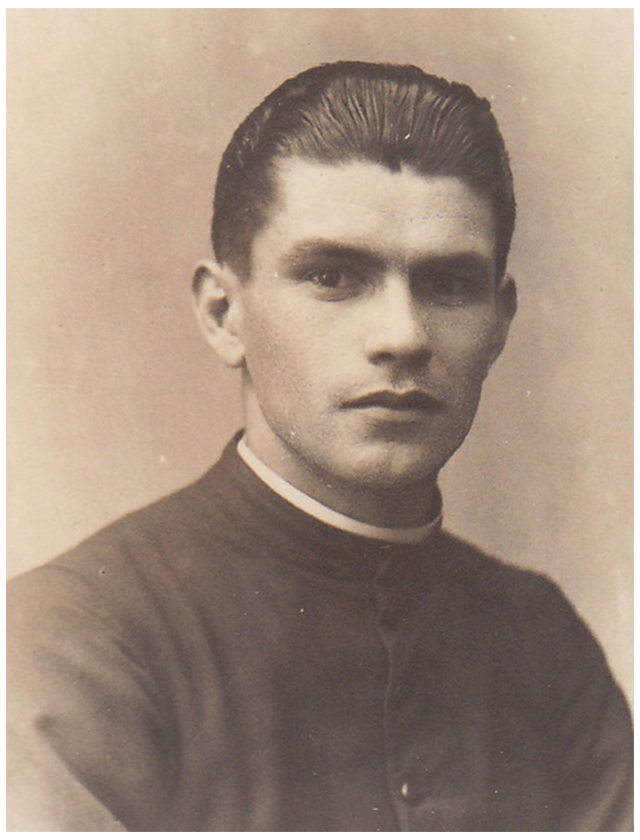 He was born in Arluno, Milan Italy on November 13, 1922.
He was born in Arluno, Milan Italy on November 13, 1922.
He entered the Minor Seminary of Santa Chiara in 1934. He made his first profession on September 30, 1940 and his perpetual vows in 1946. He was ordained a priest in Asti on June 20, 1948.
After a few months he left as a missionary for the Philippines and worked as assistant Pastor and principal of the parochial school in Rosario, Batangas from 1948 to 1958.
Then he went to the mission in Mexico from 1959 to 1970. He was later sent to California where he worked until his death on January 23, 1997. He lived 56 years as a religious and 48 years as a priest.
Rev. Fr. Alan Pearson, OSJ
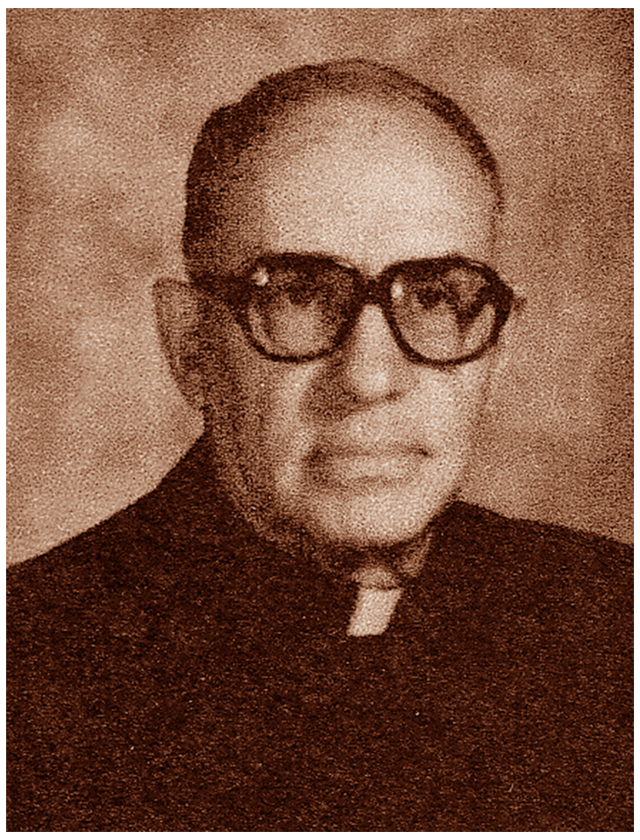 He was born in Adams, Nebraska, United States of America on July 25, 1920 to a Protestant family. At eleven years old, he was converted to the Catholic faith.
He was born in Adams, Nebraska, United States of America on July 25, 1920 to a Protestant family. At eleven years old, he was converted to the Catholic faith.
He entered in the Seminary of Santa Cruz in October 1935. He entered the Novitiate in Italy in 1938. He made his first profession of vows on September 30, 1930. He professed the vows perpetually in 1944. He was ordained in 1946.
After two years, he asked to be sent in the Philippines where he worked until 1956. Then he stayed for a short period in Italy before returning to California. This was his last journey. He died in Madera, California on June 2, 1998, having lived 59 years as a religious and 52 years as a priest.
Rev. Fr. Umberto Lenzi, OSJ
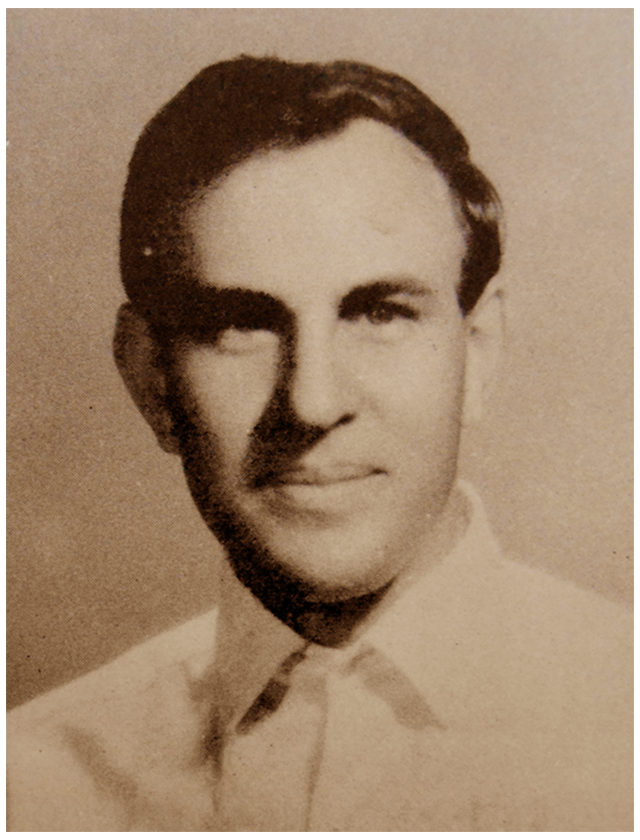 He was ordained in 1967. Then he was sent as a missionary to the Philippines on October 1968. But for personal reasons, he left the Congregation in 1971.
He was ordained in 1967. Then he was sent as a missionary to the Philippines on October 1968. But for personal reasons, he left the Congregation in 1971.

